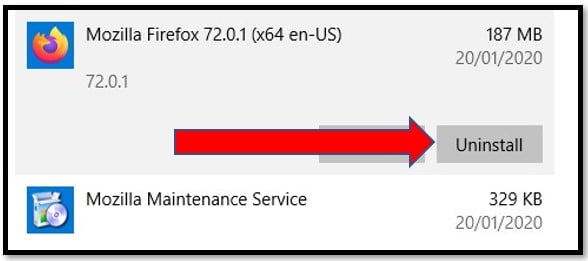

Some fear that, absent Firefox and its Gecko rendering engine, Chrome wins the war by default. Other browsers are in a bad way - after a face-saving climb in the second half of 2020, Apple's Safari is now back to where it started 12 months ago - but Firefox is a special case, as it's the only one of the Top Four not tied in one way or another to the technologies that power Chrome. From January 2019 to July 2021, Firefox's usage share plummeted by more than 43%, nearly double the MAU downturn. (Back in November, Computerworld forecast that Firefox would slip under the 6% bar by August 2021.) If Firefox stays on its past-12-month trend, the browser could slip under 5% by the end of this year and below 4% by August 2022.Īs if Mozilla's MAUs weren't bad enough, NetApplications' numbers trumped them spectacularly. At the end of July, for example, Firefox's share had dwindled to 5.6%, marking the second straight month at a sub-6% mark. That recent data showed Firefox continuing its advance toward zero. ( Computerworld asked the company last year to explain the disparity, but never received a reply.) From November 2020 through July 2021, the latter the most recent, the company continued to post monthly results. In actuality, NetApplications did not halt publication of browser usage numbers. (At the end of October 2020, when NetApplications announced the end of its browser usage data collection, Firefox's share stood at 7.2%.) But in late 2020, NetApplications said it was pulling the plug on the data source. For years, Computerworld had regularly reported on the battles for browser dominance, and as a story-within-that-story, noted a gradual shrinking of Mozilla's share.Ĭomputerworld relied on data from NetApplications, a California metrics vendor that tracked browser usage by tallying agent strings reported to the websites of its customers. To anyone paying attention, Firefox's decline was no surprise.

That's a precipitous decline for a browser with no fat on its user base bones. 1, 2021, Firefox shed 57.5 million MAUs, representing a reduction of about 23%, or nearly a quarter. Install a package by its capability, hardware architecture and version.From Jan. For more information on the concept of capability, refer to "Capability concept". In this example, the firefox capability is provided by the MozillaFirefox package, thus running the command installs this specific package. Install a package by the capability it provides. Installs all packages which names start with “ Moz”.

Install a package using wild cards in its name. Mozilla refers to the desired repository). Install a package by its exact name from a specific repository (where Install a package by its exact name and version number. Selecting packages to install or remove # zypper install MozillaFirefox


 0 kommentar(er)
0 kommentar(er)
